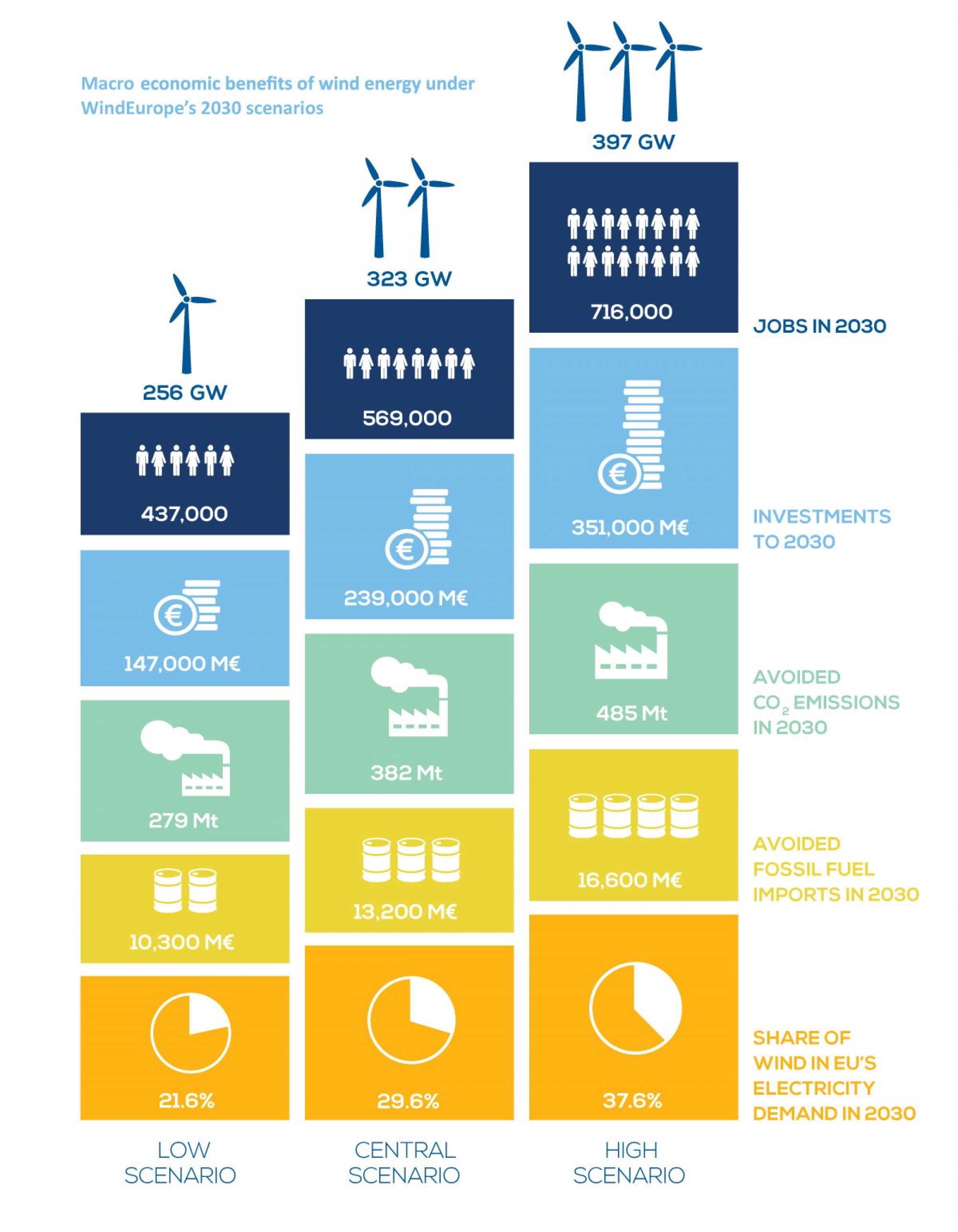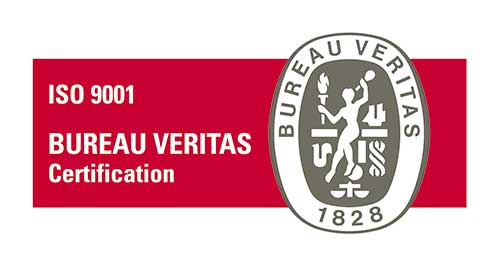According to two new reports published by WindEurope, wind energy could provide up to 30% of Europe’s power by 2030.
WindEurope has published its Wind Energy Outlook, which comprises two reports: Outlook to 2020 and Scenarios for 2030.
According to “Outlook to 2020”, Europe could be looking at an average installation rate of 12.6 GW worth of wind energy each year, bringing Europe up to a total of 204 GW worth of wind energy by 2020, surpassing hydro and providing 16.5% of Europe’s electricity demand. The majority of this deployment will be centralized in six countries: Germany, UK, France, Spain, Netherlands, and Belgium.
WindEurope’s report “Scenarios for 2030” outlines three projections: Low, Central, and High Scenario (as shown in the image).
The Central scenario predicts a 323 GW cumulative power capacity by 2030 (253 GW onshore and 70 GW offshore), doubling the cumulative capacity at the end of 2016 (160 GW). This would account for the equivalent of 30% of the European Union’s power demand, driven by investments worth €239 billion by 2030 and yield 569,000 jobs.
This growth would represent 382 million tonnes of avoided CO2 emissions. It would also avoid the import of €13.2 million worth of fossil fuels each year.
But these scenarios are highly reliant on strong policies being implemented and significant changes being made to the energy system. Specifically, WindEurope calls out the need for greater certainty for long-term revenue stability, significant progress on the integration of variable renewable energy sources into the grid, and clear government policy commitments.
Giles Dickson, CEO of Windeurope, says “Wind energy is now firmly established as the cheapest form of new power generation. But the outlook from 2020 is uncertain. The industry needs binding and ambitious National Energy & Climate Action Plans that provide clarity on post-2020 volumes, which will allow cost reductions to continue. This requires a good outcome on the EU Clean Energy Package. With an ambitious European renewables’ target of at least 35% by 2030, the wind industry could deliver even bigger volumes at a competitive cost.”
The Central scenario predicts a 323 GW cumulative power capacity by 2030 (253 GW onshore and 70 GW offshore), doubling the cumulative capacity at the end of 2016 (160 GW). This would account for the equivalent of 30% of the European Union’s power demand, driven by investments worth €239 billion by 2030 and yield 569,000 jobs.
This growth would represent 382 million tonnes of avoided CO2 emissions. It would also avoid the import of €13.2 million worth of fossil fuels each year.
But these scenarios are highly reliant on strong policies being implemented and significant changes being made to the energy system. Specifically, WindEurope calls out the need for greater certainty for long-term revenue stability, significant progress on the integration of variable renewable energy sources into the grid, and clear government policy commitments.
Giles Dickson, CEO of Windeurope, says “Wind energy is now firmly established as the cheapest form of new power generation. But the outlook from 2020 is uncertain. The industry needs binding and ambitious National Energy & Climate Action Plans that provide clarity on post-2020 volumes, which will allow cost reductions to continue. This requires a good outcome on the EU Clean Energy Package. With an ambitious European renewables’ target of at least 35% by 2030, the wind industry could deliver even bigger volumes at a competitive cost.”
Sources: windeurope.com, Outlook to 2020 and Scenarios for 2030







